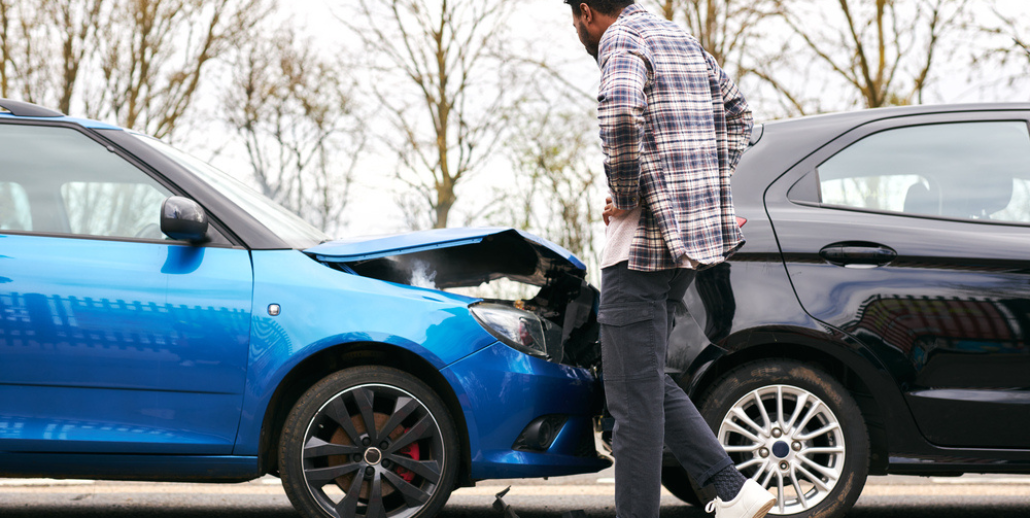Being rear-ended by another car is a constant danger on the highways of the world. There are always vehicles behind you, and there is always the chance that one of them could fail to stop in time. Luckily, these kinds of collisions tend to be a lot less damaging than head-on collisions, but that isn’t saying much. A rear-end collision can still cause significant damage, especially if the impact occurred at a high rate of speed. If you should find yourself in that situation, here are a few things that you should remember. This will explain what to do when you have been rear-ended.
1. Get Off The Road And Make Contact
Your first priority should be getting off the road. At the same time, observe the car that hit you. They should be doing the same. If it looks like they aren’t going to pull over, make sure you get a good look at their license plate. Repeat that combination of letters and numbers to yourself until you can find a way to write it down. If nothing else, you can use the “notes” feature on your phone. If they try to drive off, they are guilty of a serious crime.
Once off the road, make contact with the other driver. This might not be a friendly situation, but it has to be done. Try not to get hostile, even if it was completely the other driver’s fault: Even if you might be justified, no good will come of that. Just try to remember that they have already pulled over and taken responsibility for their mistake. Obviously, if you or the other driver have been injured, you need to call 911 immediately.
2. Call The Police
Either you or the other driver will need to call the police so that a properly certified accident report can be made. This is very important because your insurance company will want a copy of that police report later. Make sure to ask the officer where, when, and how you can obtain a copy of that police report.
When you tell the officer what happened, just be completely truthful and make sure the other driver does the same. Some people will try to lie their way out of culpability, so don’t let anyone get away with that. If nothing else, there might be camera footage that can be pulled in the event of a dispute. The important thing is to make sure you are nothing but truthful at all times. Anything else will simply discredit you.
3. Take Plenty Of Pictures
Everyone carries a smartphone these days and tends to have high-quality cameras. Therefore, there is no excuse for not taking plenty of pictures. You particularly need pictures of the damage that occurred from the accident. Get pictures of all involved vehicles from as many angles as you can, focusing on the areas that suffered the impact. This is likely to help you later on, should a dispute about blame arise.
As for when you should take these pictures, it would probably be best to take them immediately after calling the police. You are going to be waiting for at least a few minutes anyway, so you might as well put that time to good use. Besides, it gives you something to do and takes away from the awkwardness of the situation.
4. Contact Your Insurance Company
At the earliest possible opportunity, you should call your insurance company and let them know what has happened. Bear in mind that the call will surely be recorded and that it will surely be reviewed later. So, make sure there are no inconsistencies between what you told the officer and what you tell your insurance company. Again, the important thing is to be completely and consistently truthful. Even if the whole thing is your fault, it will be easier on you in the long run.
It would probably be best to contact your insurance company immediately after the police officer has left. If the accident occurred after-hours, call them early the next morning.
Avoiding Rear-End Collisions
You might remember a concept from your old driving manual called “the space cushion.” This is a certain amount of space that must be maintained at all times. Basically, it just means that you should avoid getting too close to other vehicles as much as possible. That way, you will have more time to stop if necessary. Since it is hard to judge exact distances while driving, it is best to maintain a space that is about the same size as your vehicle. Maintaining this space in the front and back will help you to avoid rear-end collisions.
Awareness is also very important. Brake lights and turn signals exist for a reason, so keep your eye on them. This includes keeping an eye on your own brake lights/turn signals and making sure they work properly. When the car in front of you is braking, you probably need to do the same. When you do so, you should brake as gradually as possible. If you slam on the brakes and stop very quickly, the car behind you might not react quickly enough.
Conclusion
If you have been paying attention, you should now know what to do if you are rear-ended. However, there is one aspect that has not been discussed, and that is auto repair. You will probably need the services of a good auto body shop, and that’s where Elmer’s Auto Body can be of help. If you need post-collision auto repair or any other kind of automotive work, you can call our team at (856) 218-0202.

